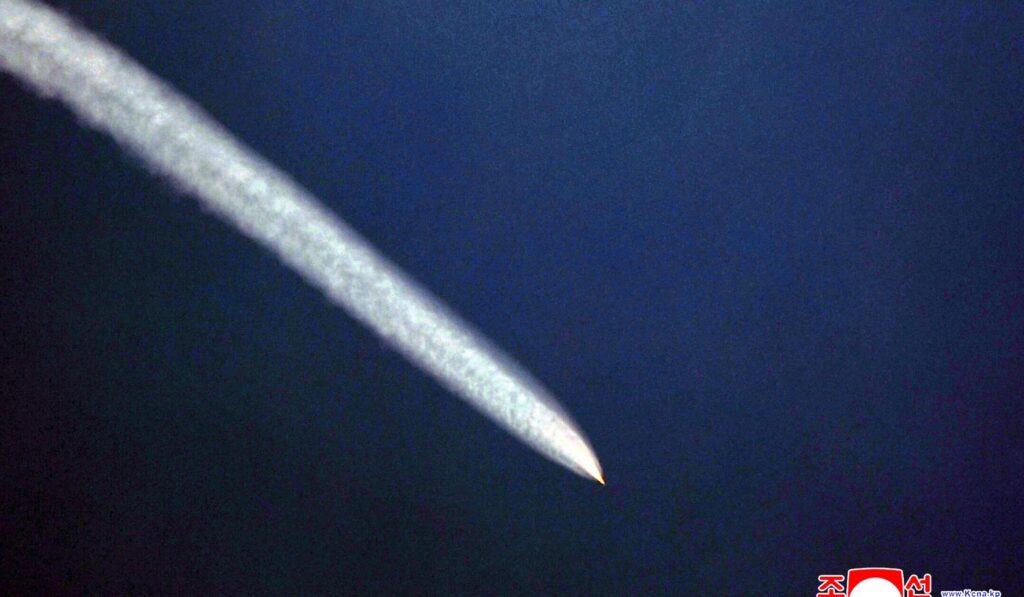North Korea says it tested a new hypersonic missile system intended to strengthen its nuclear deterrent, a move that raises fresh security concerns across East Asia and stresses the need for steady, strong defense policies. The tests are another step in Kim Jong Un’s long game to expand strike capabilities and bargaining power. This article breaks down what the tests mean, how they change the regional balance, and why a firm posture matters.
The regime announced its latest launches as proof that a new hypersonic capability is operational. Hypersonic weapons travel at many times the speed of sound and can maneuver during flight, which complicates tracking and interception. That technical leap is meant to give Pyongyang a more credible way to threaten adversaries and to raise the costs of any confrontation.
For neighbors like South Korea and Japan the message is immediate and unwelcome. These states face shorter warning times and more complicated defense calculations when hypersonics are in the mix. Their already serious anxieties about ballistic threats now include systems that could shift target sets and timeline assumptions used by planners.
From Washington’s perspective the tests underscore a recurring reality: hostile regimes will pursue asymmetric advantages when they perceive weakness or distraction. The test is not just a military development. It is a strategic signal that Kim Jong Un intends to keep expanding his toolkit to punch above his weight. That means U.S. policy must remain clear about deterrence and about protecting allies.
Republican thinking on this is straightforward. Adversaries respect power and clarity. Responding with vague warnings or symbolic measures will not deter further advances in missile technology. Instead, credible capabilities and visible support for partners reduce the chance that conflict spirals and make negotiation more likely to come from a position of strength.
Missile defense systems, forward deterrence, and modernized strike options are tools that change calculations on the other side. Enhancing regional missile defenses and ensuring interoperable planning with Seoul and Tokyo forces Pyongyang to consider high costs for aggression. When deterrence is visible and reliable it shapes behavior without having to fight.
Sanctions and diplomatic pressure remain part of the toolkit but they have limits when tested against a regime committed to nuclear status. History shows that isolation alone rarely stops determined state programs. That reality argues for sustained pressure combined with defense investments so incentives for restraint are reinforced by risk for continued provocation.
Intelligence and early warning are equally important in dealing with hypersonic threats. Faster, more maneuverable weapons demand sharper detection and faster decision loops. Strengthening sensor networks and sharing data with allies helps blunt the advantage these systems are designed to create.
The broader strategic picture matters too. North Korea’s weapons push is wrapped into domestic politics and international bargaining. Kim seeks leverage for sanctions relief, aid, or diplomatic recognition while building a military posture he sees as insurance. Recognizing that mix helps craft responses that deny rewards for aggression while keeping diplomatic levers ready when they can be used without rewarding coercion.
Allies in the region need consistent, credible commitments from the United States rather than drift or uncertainty. That means aligning capabilities and exercises so deterrence is tangible and predictable. A steady posture reassures partners and separates them from the worst-case outcomes the North tries to provoke.
Finally, public messaging and congressional oversight play a role in maintaining a durable policy. Clear explanations of why investments in defense and technology are necessary help build political consensus. When the nation and its partners are united on preventing escalation and bolstering deterrence, the chance of miscalculation or opportunistic moves by adversaries shrinks.



